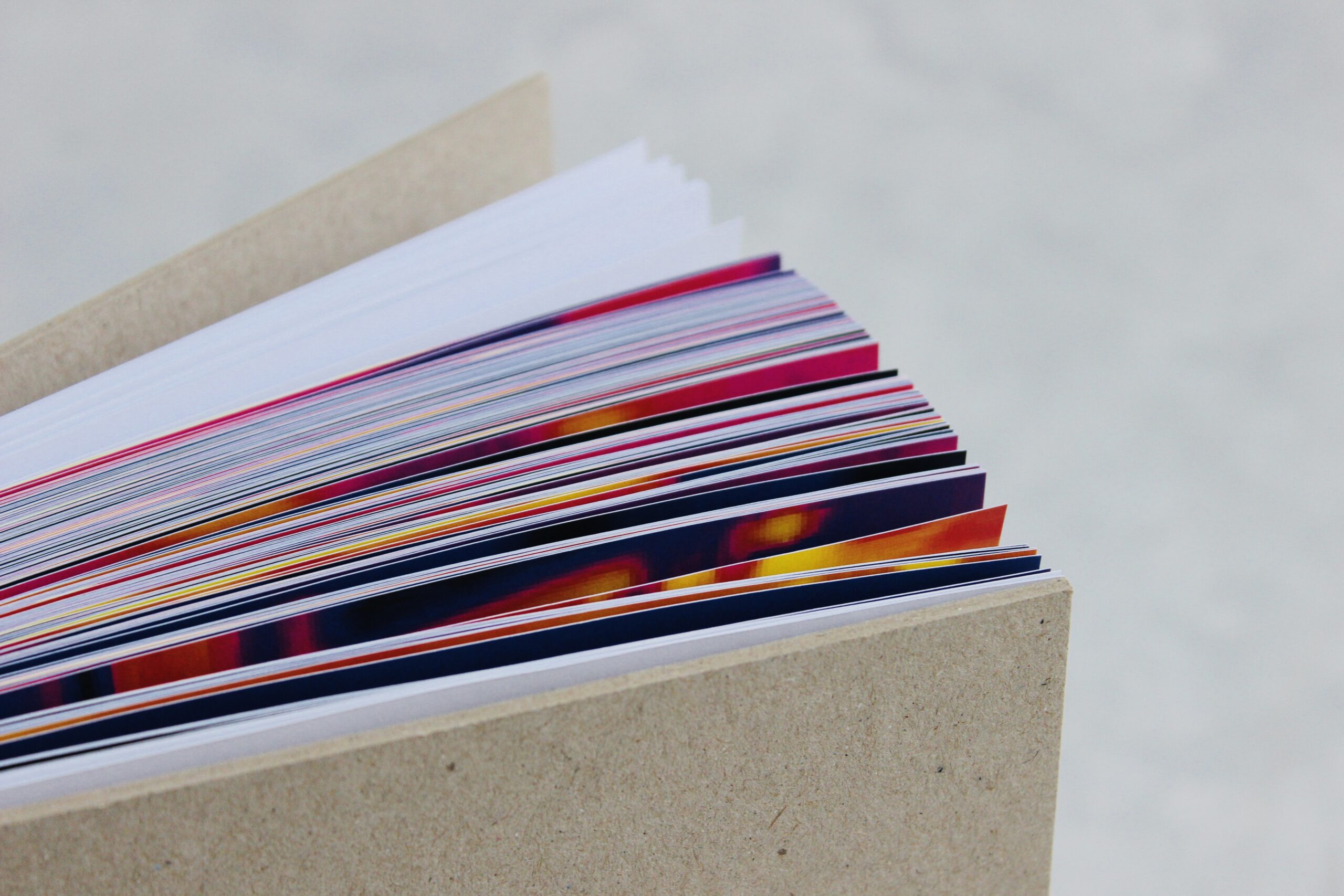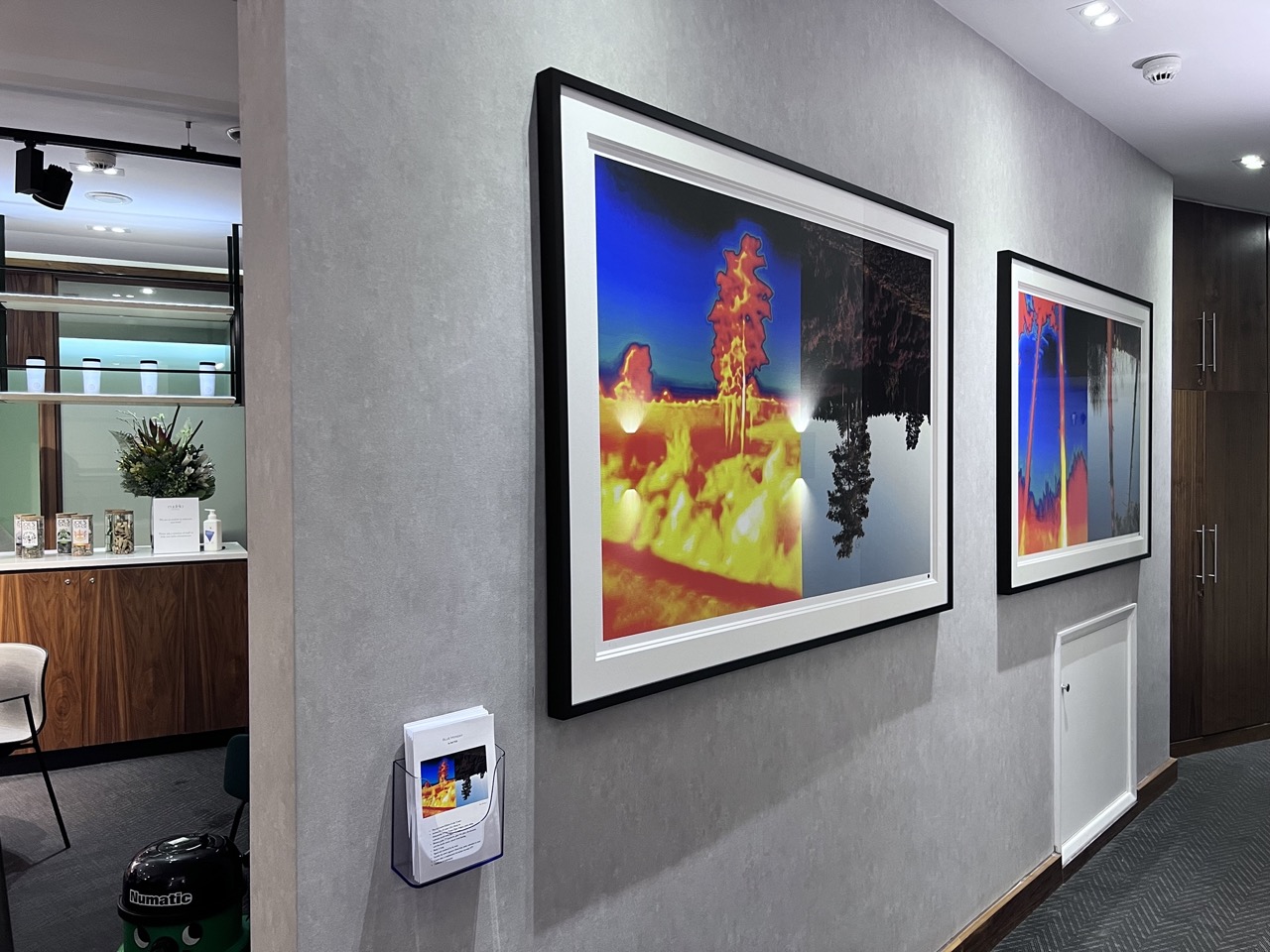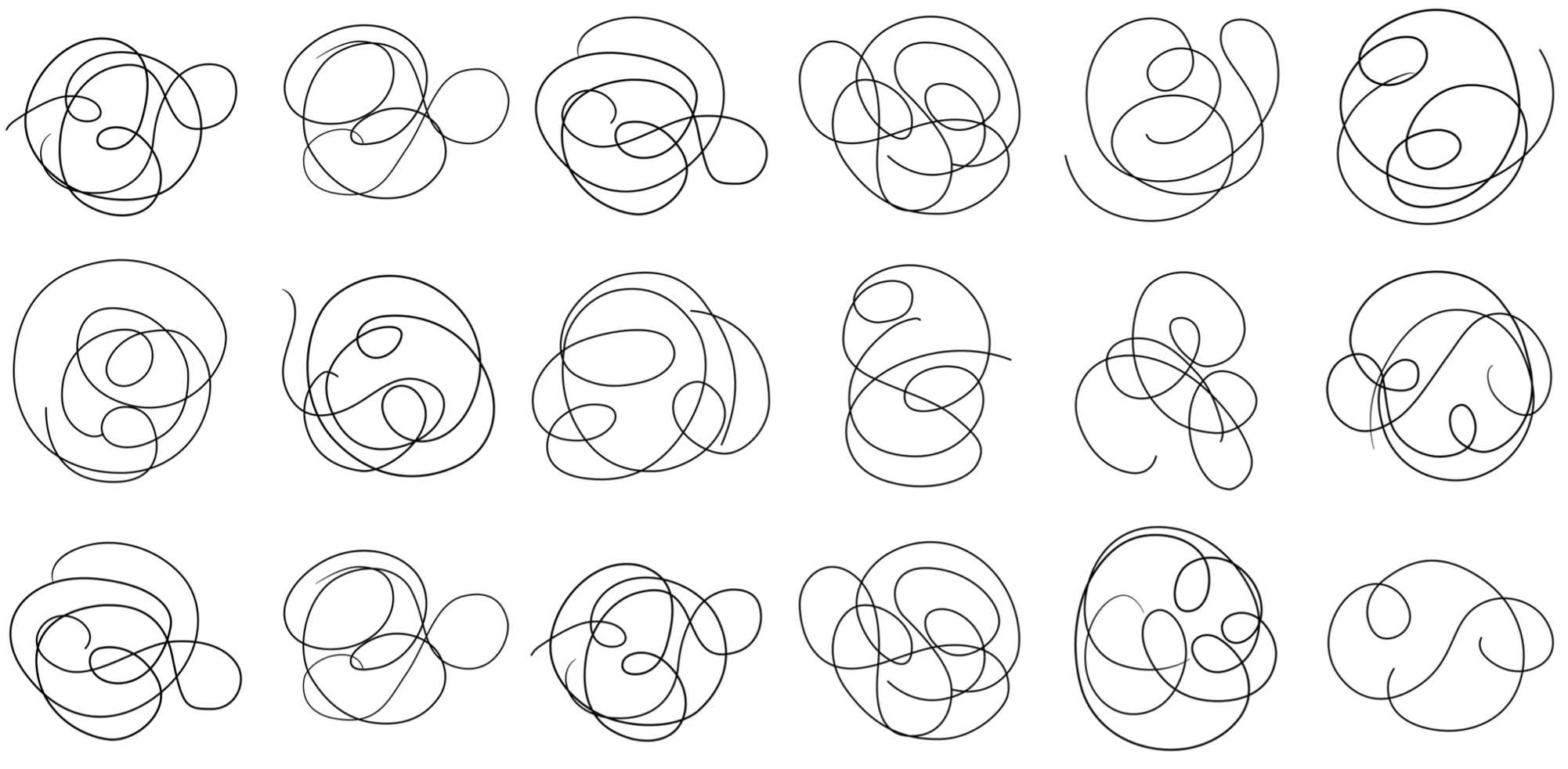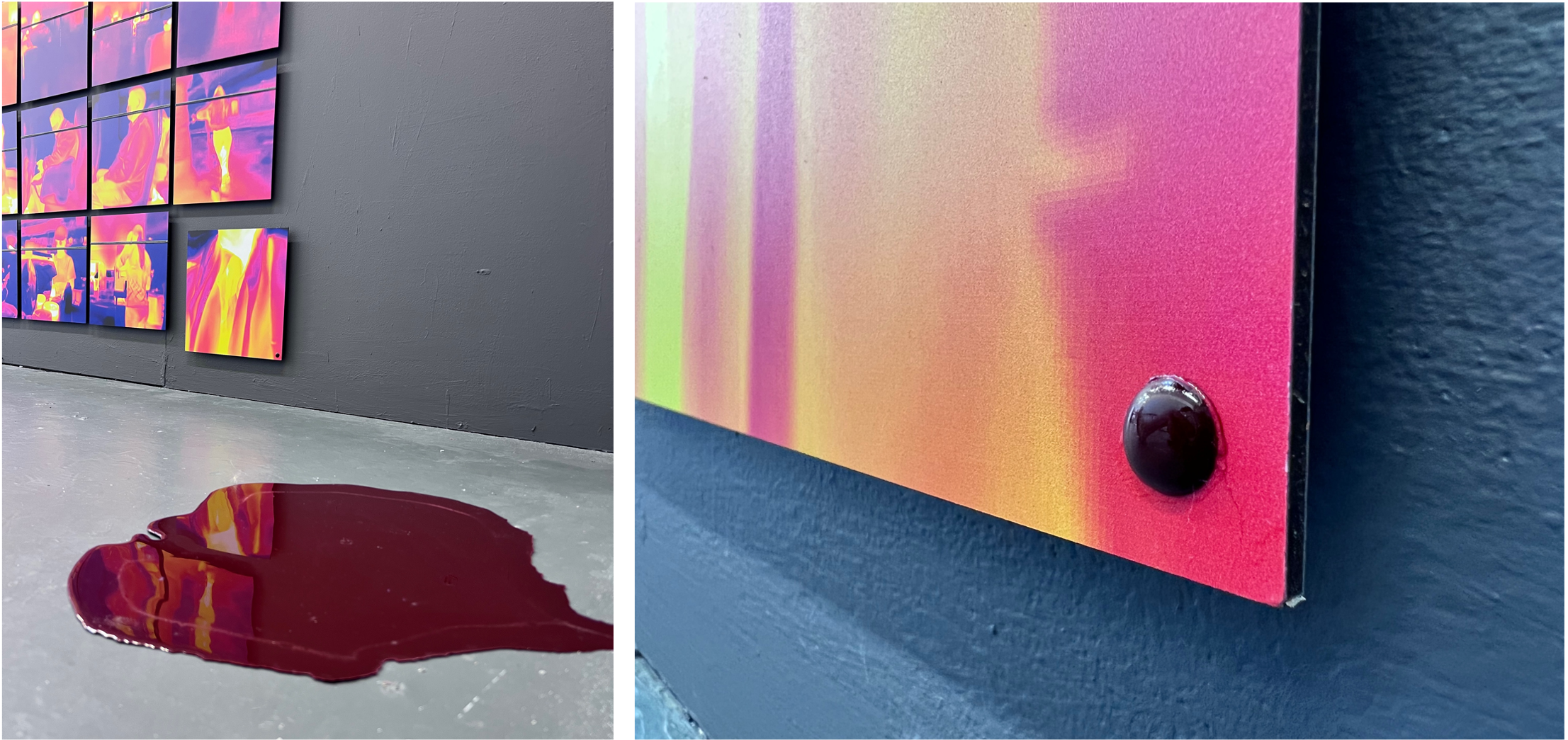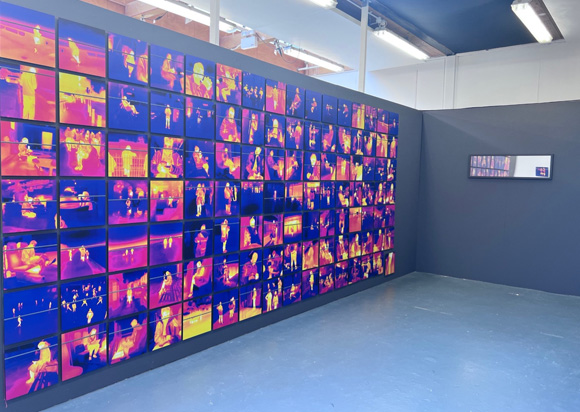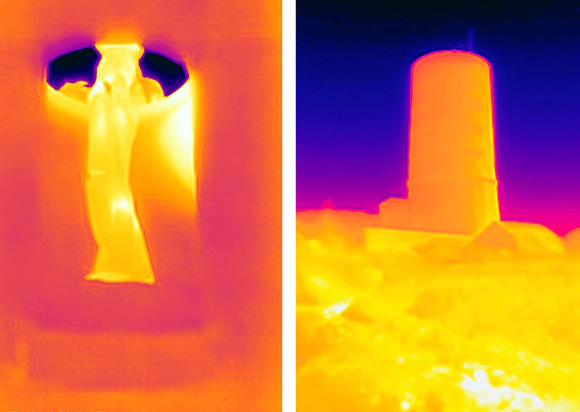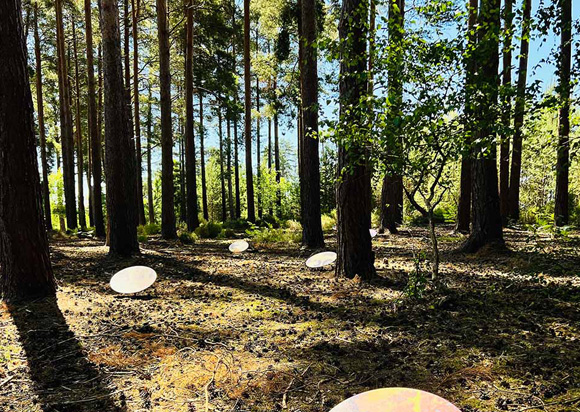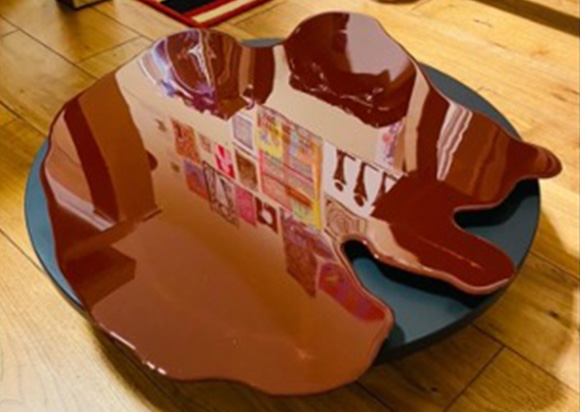
Stef Will
• 10 November 2021
Fallen in love
I grew up in Northern Germany in a middle-class family; my father was a civil servant, my mother a housewife. While my dad was a committed ‘art-atheist’, my mother loved art … as long as it was ‘the right kind’. Her preferred ‘genre’ was impressionism, her art hero was Claude Monet, as far as I remember.
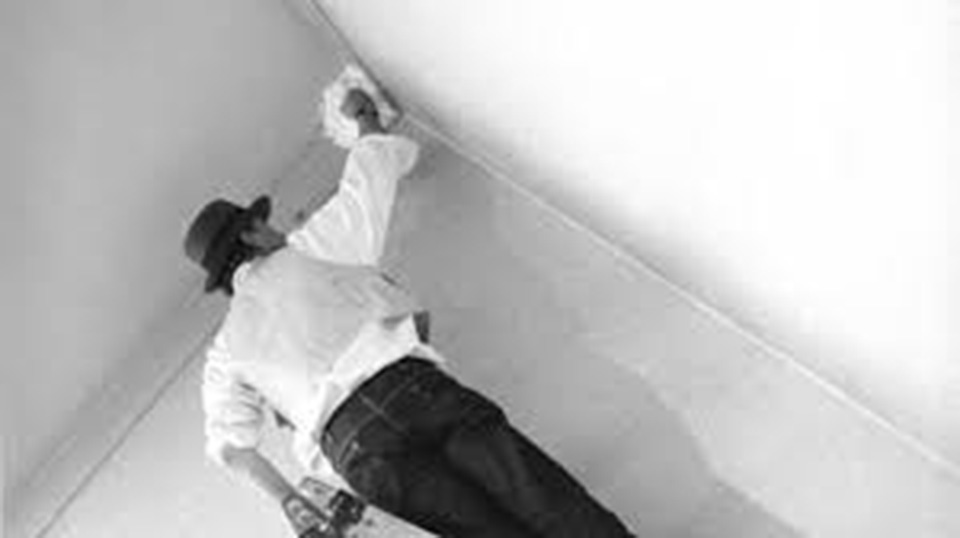 Conceptual art (or ‘Modern Art’, with a derogatory emphasis on ‘modern’, as my parents called it), was despised and laughed at in my family when growing up. I remember jokes about Joseph Beuys’ ‘Fettecke’ (Fat Corner) in particular. Not surprisingly, my parents found it hilarious when the janitorial staff of the Kunstakademie Duesseldorf accidentally destroyed his Fat Corner in 1982, assuming it was grime. Apparently, the cleaning crew, who had not recognized Beuys’s work as an art object, had knocked it down with a broom and discarded it (to be fair, that is a bit funny, but I am digressing).
Conceptual art (or ‘Modern Art’, with a derogatory emphasis on ‘modern’, as my parents called it), was despised and laughed at in my family when growing up. I remember jokes about Joseph Beuys’ ‘Fettecke’ (Fat Corner) in particular. Not surprisingly, my parents found it hilarious when the janitorial staff of the Kunstakademie Duesseldorf accidentally destroyed his Fat Corner in 1982, assuming it was grime. Apparently, the cleaning crew, who had not recognized Beuys’s work as an art object, had knocked it down with a broom and discarded it (to be fair, that is a bit funny, but I am digressing).
Anyway, with that ‘background noise’ while growing up, I always assumed that I don’t like Beuys, so never bothered to look into his work (I know, I know, don’t say it…). However, the other day, I went to London’s Tate Modern for another stroll around their exhibitions and when entering one of the rooms, I suddenly found myself confronted with a monumental, blood-red, sculptural piece hanging majestically from the ceiling. I was instantly in awe. Over fifty gigantic cords of thick unspun wool, dyed red, flew down from a metal ring just beneath a super-high ceiling. Each strand had several knots placed along its length in irregular intervals.
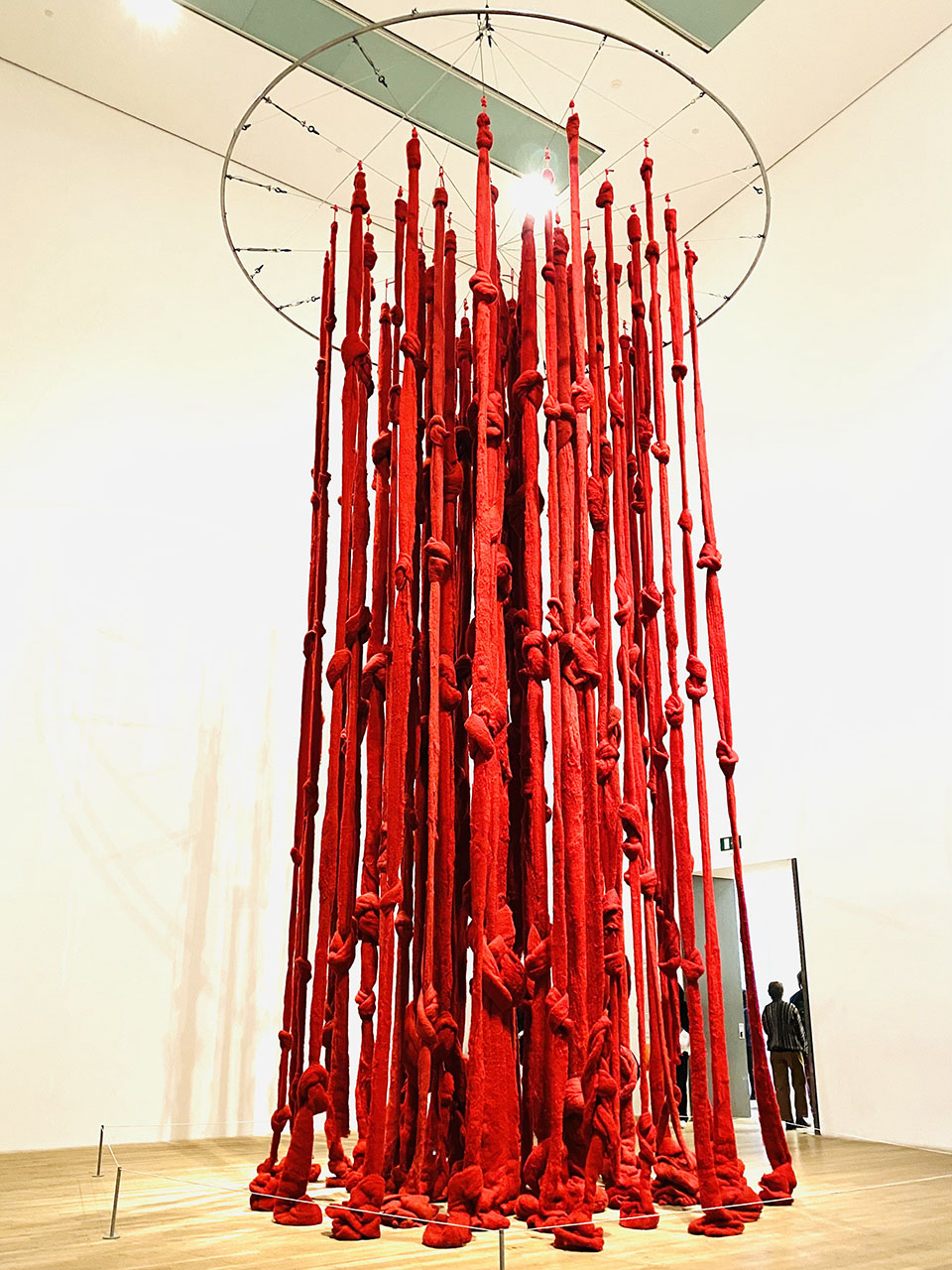 I just couldn’t stop looking at it. The way the work was dramatically claiming its space was simply breath taking. I slowly walked around it several times to take it all in, then sat on a chair next to it, simply to be in its presence a little longer. Eventually I had to move on, but before leaving the room, I went to check out Tate’s written information about it on the wall. That’s when I found out that this piece (‘Quipu Womb’) was in fact by Josef Beuys (in collaboration with poet and artist Cecilia Vicuna). I just could not believe that this was Beuys’ work.
I just couldn’t stop looking at it. The way the work was dramatically claiming its space was simply breath taking. I slowly walked around it several times to take it all in, then sat on a chair next to it, simply to be in its presence a little longer. Eventually I had to move on, but before leaving the room, I went to check out Tate’s written information about it on the wall. That’s when I found out that this piece (‘Quipu Womb’) was in fact by Josef Beuys (in collaboration with poet and artist Cecilia Vicuna). I just could not believe that this was Beuys’ work.
I learned that ‘Quipu Womb’ references menstrual blood as well as energetic cycles of nature, which is of course very relevant to my work (I work a lot with different representations of blood, both as an existential substance as well as an identifier of identity and the self). The ‘quipu’ is said to be a system of knotting robes in ancient South American cultures, as an alternative to written language.
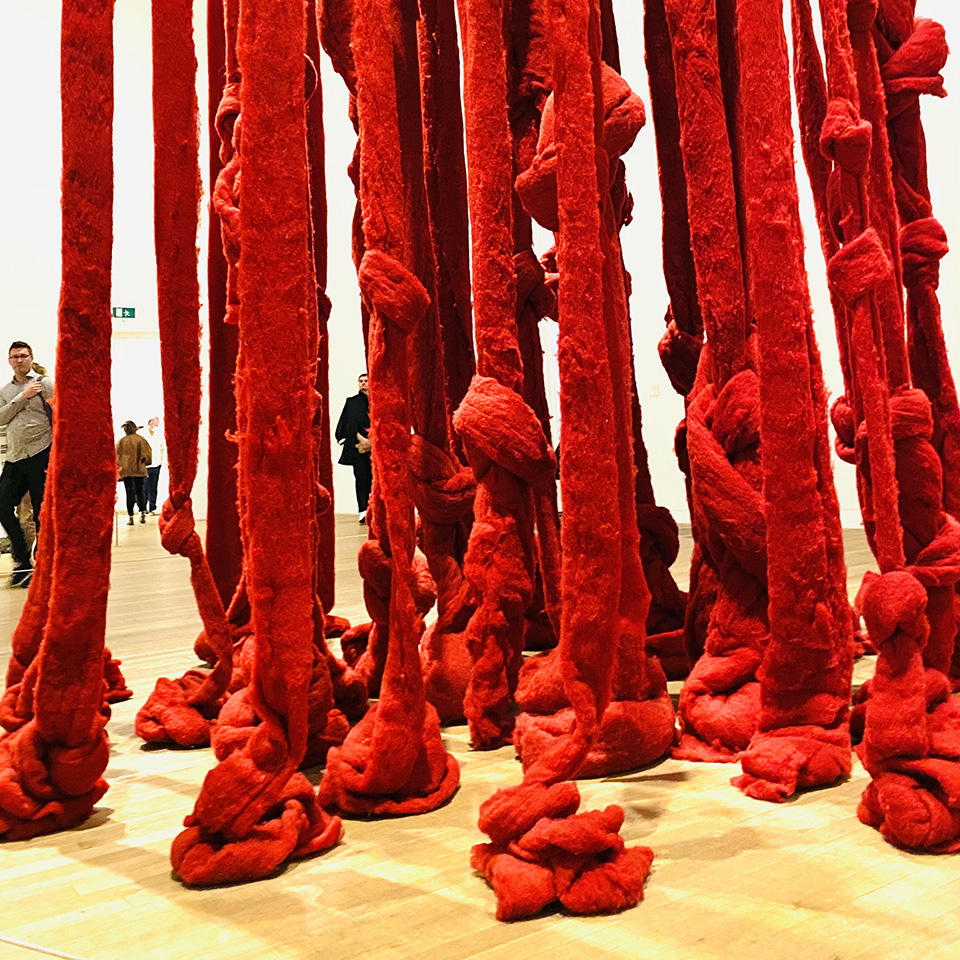 In the same room, there was another piece by Josef Beuys, ‘Lightening with Stag in its Glare’, a large-scale bronze sculpture suspended in a ring hanging from the ceiling. The sculpture is cast from a mount of soil, representing a lightning bolt striking the earth. The two enormous works create an exciting tension between them – soft red wool juxtaposed with hard dark bronze, both referencing intangible natural forces: energies and lightning.
In the same room, there was another piece by Josef Beuys, ‘Lightening with Stag in its Glare’, a large-scale bronze sculpture suspended in a ring hanging from the ceiling. The sculpture is cast from a mount of soil, representing a lightning bolt striking the earth. The two enormous works create an exciting tension between them – soft red wool juxtaposed with hard dark bronze, both referencing intangible natural forces: energies and lightning.
I still think about that room at Tate. Will probably go back to just sit next to ‘Quipu Womb’.
Also – I am a Beuys convert. While I always assumed that I hate Beuys (apologies…), it seems I may in fact be in LOVE with Josef Beuys’ work and can’t wait to see more.
